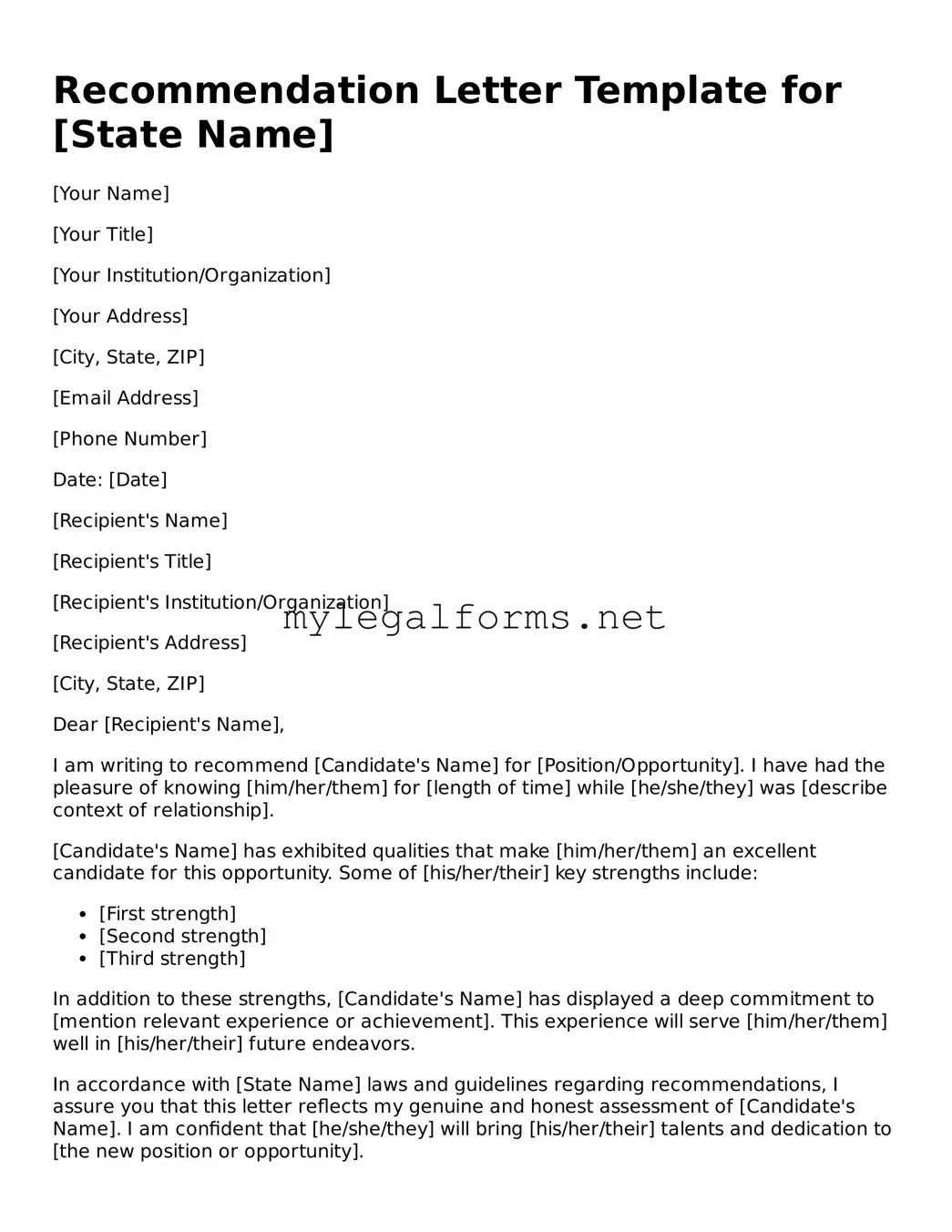Recommendation Letter Template for [State Name]
[Your Name]
[Your Title]
[Your Institution/Organization]
[Your Address]
[City, State, ZIP]
[Email Address]
[Phone Number]
Date: [Date]
[Recipient's Name]
[Recipient's Title]
[Recipient's Institution/Organization]
[Recipient's Address]
[City, State, ZIP]
Dear [Recipient's Name],
I am writing to recommend [Candidate's Name] for [Position/Opportunity]. I have had the pleasure of knowing [him/her/them] for [length of time] while [he/she/they] was [describe context of relationship].
[Candidate's Name] has exhibited qualities that make [him/her/them] an excellent candidate for this opportunity. Some of [his/her/their] key strengths include:
- [First strength]
- [Second strength]
- [Third strength]
In addition to these strengths, [Candidate's Name] has displayed a deep commitment to [mention relevant experience or achievement]. This experience will serve [him/her/them] well in [his/her/their] future endeavors.
In accordance with [State Name] laws and guidelines regarding recommendations, I assure you that this letter reflects my genuine and honest assessment of [Candidate's Name]. I am confident that [he/she/they] will bring [his/her/their] talents and dedication to [the new position or opportunity].
Please feel free to contact me if you need any further information or specific examples of [Candidate’s Name]’s capabilities.
Thank you for considering this recommendation.
Sincerely,
[Your Name]
[Your Title]
